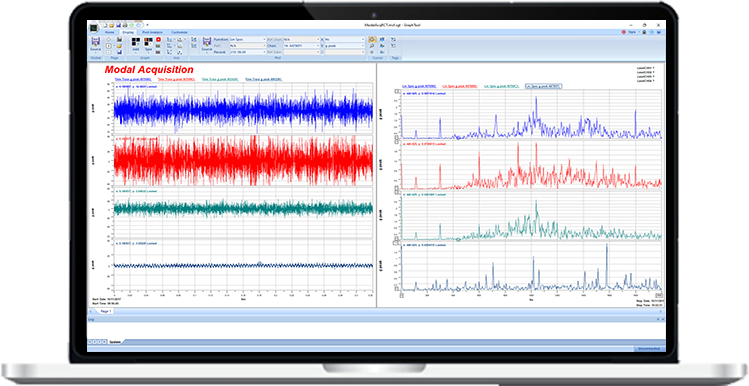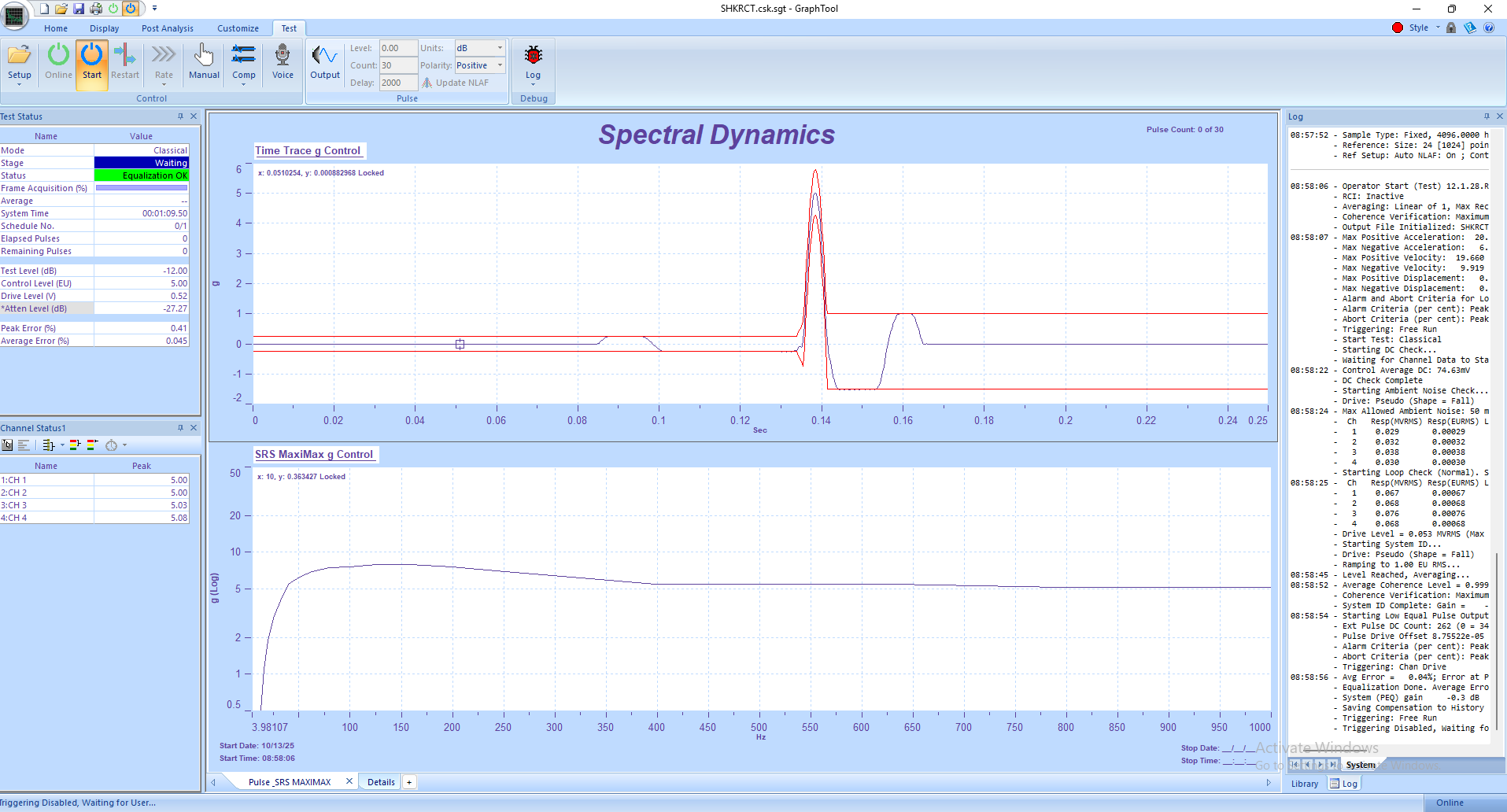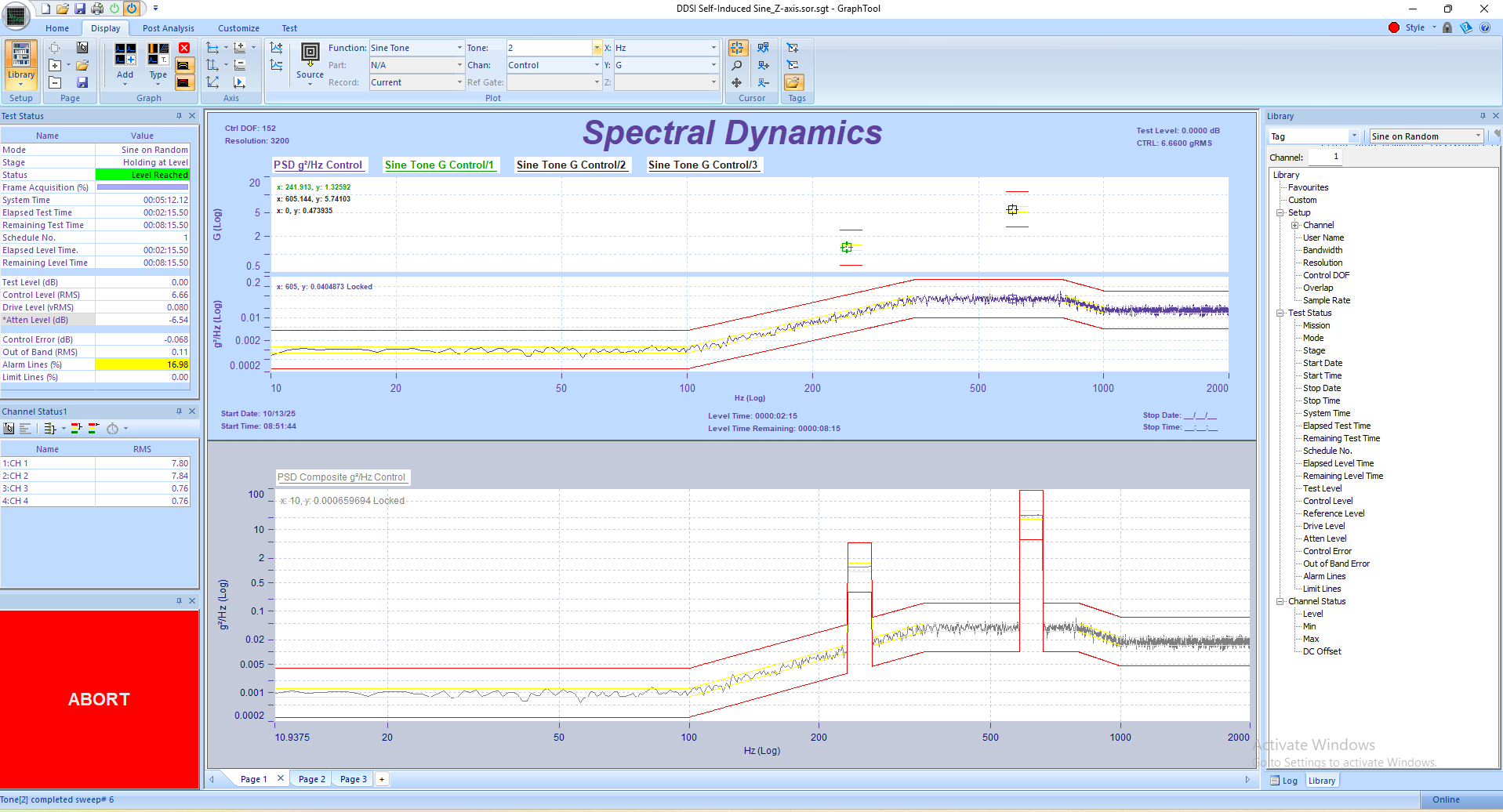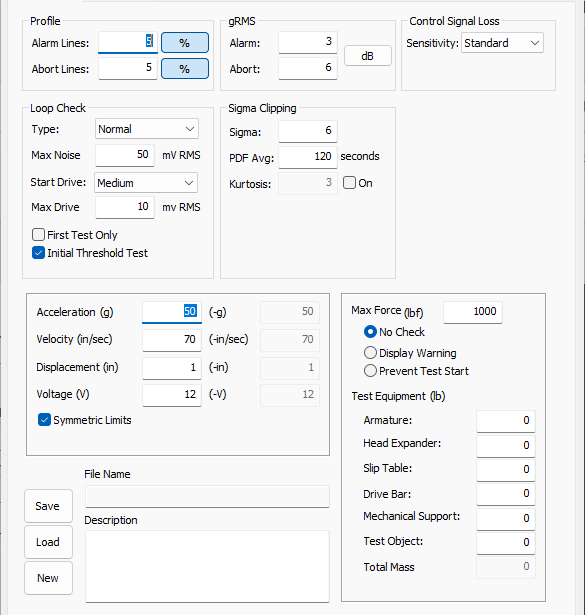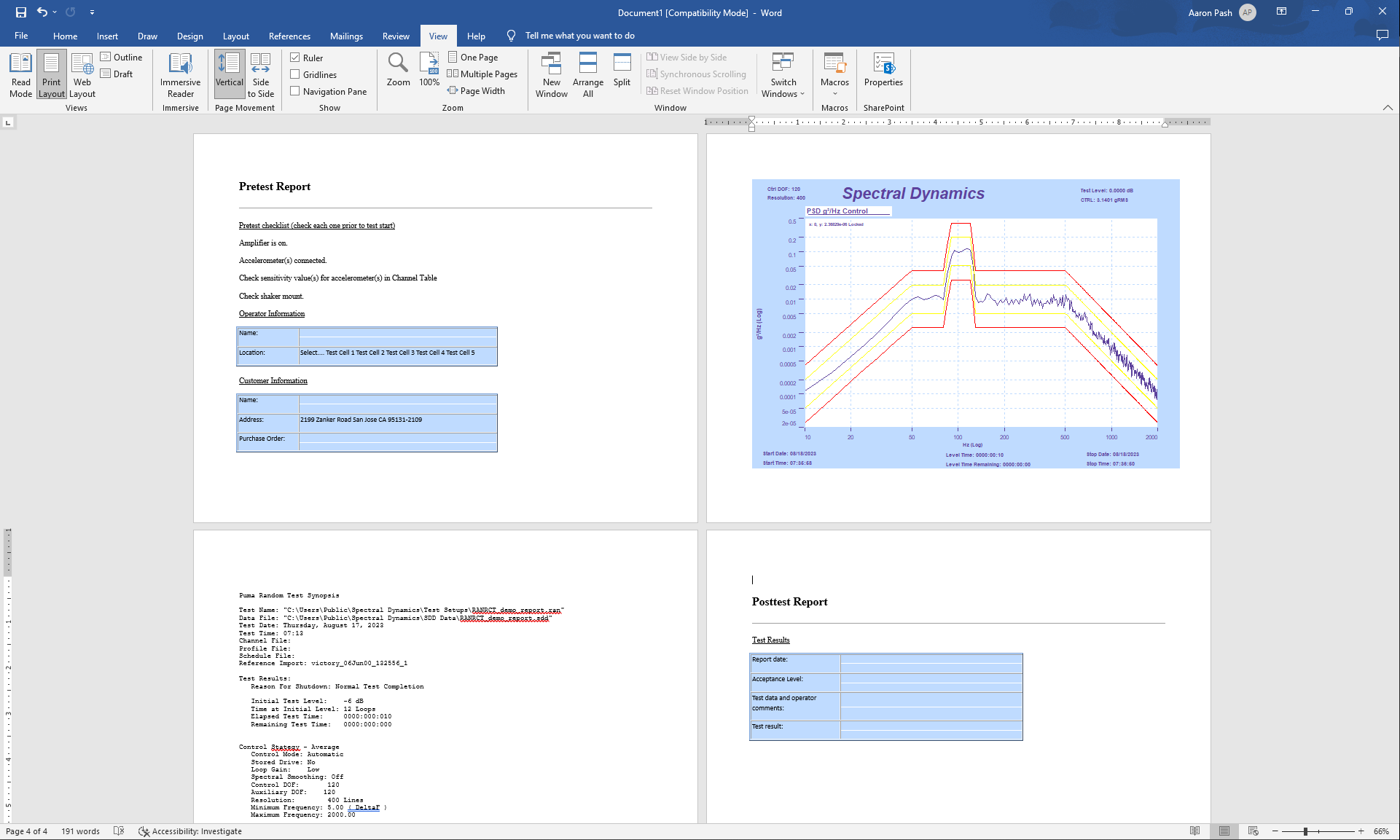Spectral Dynamics developed a control algorithm with separate controls loops dedicated to controlling the shape of the drive spectrum and overall RMS level. This optimizes the random control signal while providing both control speed and stability during your test. This “forward looking” technology allows the Lynx™ to adjust the control speed in real time to the next measure of error that is about to occur. This control algorithm is one feature of our Adaptive Technology which ensures the control and repeatability you demand when testing to higher tolerance random control spectra while exciting your test product to give you the test confidence you need.
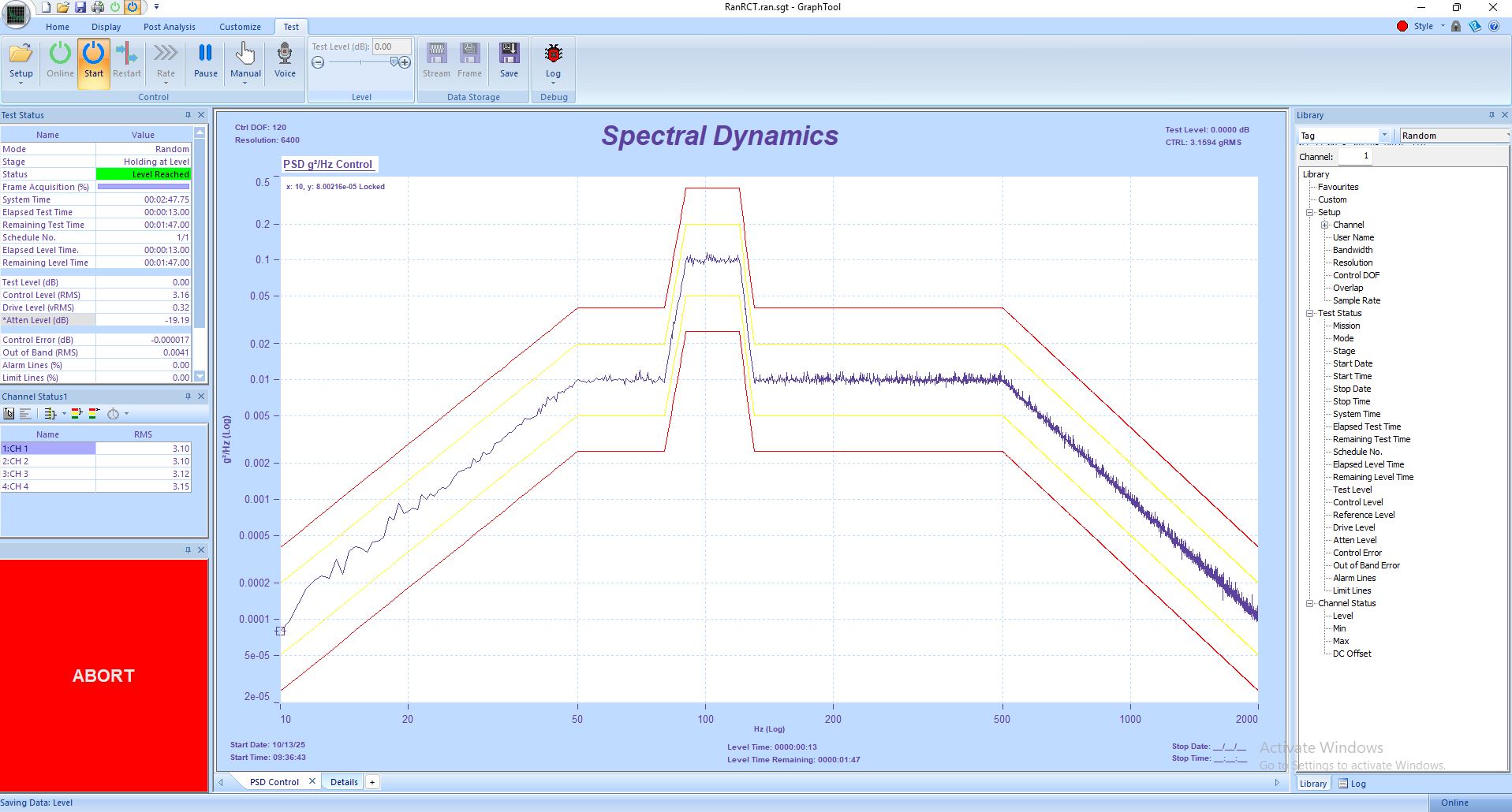
The single most important issue in Random testing after accuracy is correct random energy. This means the excitation energy must be, not only random in frequency, amplitude, and phase but constantly changing as well. Incorrect random energy causes the test to fail to conform to industry test standards. The accepted specification for amplitude variability is described as: 120 Degrees of Freedom (DOF) for control and WILL vary at least +/- 1dB. It does not say it MAY. The statistical standard for Random says it WILL vary +/- 1dB, at least.
Features
- Continuous Control to a PSD rather than “Once per Test” control to the system ID.
- One Click Data Reporting with PDF Creation or Microsoft Word.
- Choose independent limit profiles for each active measurement channel.
- Determine Frequency Response Function (FRF) measurements for selected channels.
- Easy integration with chambers and other test instrumentation.
- Exceptionally rapid correction for resonant frequencies – provides excellent protection against over test.
Adaptive Control (standard on Lynx™) – is a tool that permits Lynx™ to “see the future” and adjust the control speed in real time to the next measure of error that is about to happen. This ‘look ahead' feature allows the Lynx™ to control problems lesser systems don't even understand


